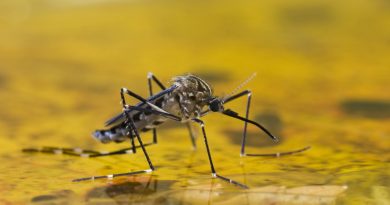Yersinia pestis Plague
Overview:
Plague is a serious bacterial infection that’s transmitted by fleas. Known as the Black Death during medieval times, today plague occurs in fewer than 5,000 people a year worldwide. It can be deadly if not treated promptly with antibiotics.
The organism that causes plague, Yersinia pestis, lives in small rodents found most commonly in rural and semirural areas of Africa, Asia and the United States. The organism is transmitted to humans who are bitten by fleas that have fed on infected rodents or by humans handling infected animals.
The most common form of plague results in swollen and tender lymph nodes — called buboes — in the groin, armpits or neck. The rarest and deadliest form of plague affects the lungs, and it can be spread from person to person.
Symptoms:
Plague is divided into three main types — bubonic, septicemic and pneumonic — depending on which part of your body is involved. Signs and symptoms vary depending on the type of plague.
Bubonic plague
Bubonic plague is the most common variety of the disease. It’s named after the buboes — swollen lymph nodes — which typically develop within a week after an infected flea bites you. Buboes may be:
- Situated in the groin, armpit or neck
- About the size of a chicken egg
- Tender and warm to the touch
Other signs and symptoms may include:
- Sudden onset of fever and chills
- Headache
- Fatigue or malaise
- Muscle aches
Septicemic plague
Septicemic plague occurs when plague bacteria multiply in your bloodstream. Signs and symptoms include:
- Fever and chills
- Extreme weakness
- Abdominal pain, diarrhea and vomiting
- Bleeding from your mouth, nose or rectum, or under your skin
- Shock
- Blackening and death of tissue (gangrene) in your extremities, most commonly your fingers, toes and nose
Pneumonic plague
Pneumonic plague affects the lungs. It’s the least common variety of plague but the most dangerous because it can be spread from person to person via cough droplets. Signs and symptoms can begin within a few hours after infection, and may include:
- A cough, with bloody sputum
- Difficulty breathing
- Nausea and vomiting
- High fever
- Headache
- Weakness
Pneumonic plague progresses rapidly and may cause respiratory failure and shock within two days of infection. If antibiotic treatment isn’t initiated within a day after signs and symptoms first appear, the infection is likely to be fatal.
Diagnosis:
If your doctor suspects plague, he or she may look for the Yersinia pestis bacteria in samples taken from your:
- Buboes. If you have the swollen lymph nodes (buboes) characteristic of bubonic plague, a fluid sample can be taken from them with a needle.
- Blood. Yersinia pestis bacteria generally are present in your bloodstream only if you have septicemic plague.
- Lungs. To check for pneumonic plague, your doctor will take sputum or fluid from your airways using endoscopy — a thin, flexible tube inserted through your nose or mouth and down your throat.
Treatment:
As soon as your doctor suspects that you have plague, you’ll need to be admitted to a hospital. There, you’ll receive powerful antibiotics, such as:
- Gentamicin
- Doxycycline (Vibramycin)
- Ciprofloxacin (Cipro)
- Levofloxacin (Levaquin)




